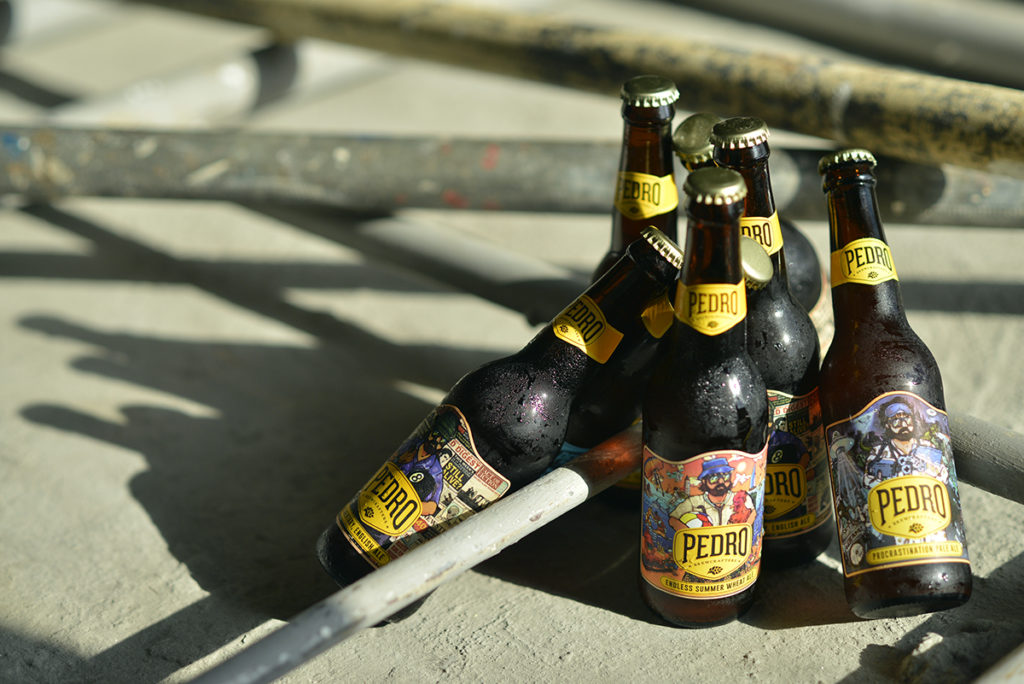Happy hour hasn’t been this fun in years. The scenario used to be that beers got people talking. But with the rise of local craft beer, the drink has become part of the conversation—thanks in part to the hipsters spreading the word around.
However, the discourse is limited. The specialized beverage has attracted a small batch of drinkers, discerning about packaging, process, and authenticity. How can these sophisticated brews then penetrate a larger market rooted in pale pilsens? For the makers of Pedro Brewcrafters, a local brand that sprouted in September 2015, it’s all about accessibility.
A weekend brewing habit-turned-business, Pedro is the first foray of a team of three—Jill Borja and husband-and-wife tandem Jaime and Nadine Howell-Fanlo—into the craft beer industry. Diving into this small pool means brewing with the knowledge of the science behind it—in Pedro’s case, having Jaime learn it at the American Brewers Guild.
“We’re really focused on where we want to come in,” says Jaime Fanlo. “We want our lines to be approachable, friendly, and not complicated.”
The name has already made rounds in the drinking crowd. And its branding and imagery connote escapism. It’s a clear call to drink amid good, tough, and easy times. “We’re really focused on where we want to come in,” says Jaime. “We want our lines to be approachable, friendly, and not complicated.” From the Procrastination Pale Ale to the Endless Summer Wheat Ale, Pedro has established itself as a must-try for newbies and a reliable brand for the more hardcore drinkers.


There’s a catch, though: This interested pack comes in a modest number. Key players in the industry like Pedro need to reach out further and guide conservative tastes. “We need to grow with our market. The Philippine market is very young when it comes to craft beer. We need to hold their hand in the process,” says Borja. “[Craft beer makers] give them the basics and hopefully as their palates develop, they’ll try more complicated variants of beer.”
Contrary to popular belief, the industry has yet to see a boom in offerings. More and more craft beer makers, however, are brewing numerous options for the market. Competition is growing, but brands are working together to make craft beer more visible and maintain standards in brewing.
“The more players there are the better because there’s more noise,” says Jaime. Anybody who has had their share of happy hour knows that more noise means better times are ahead of us all.
Originally published in F&B Report Vol. 13 No. 3

